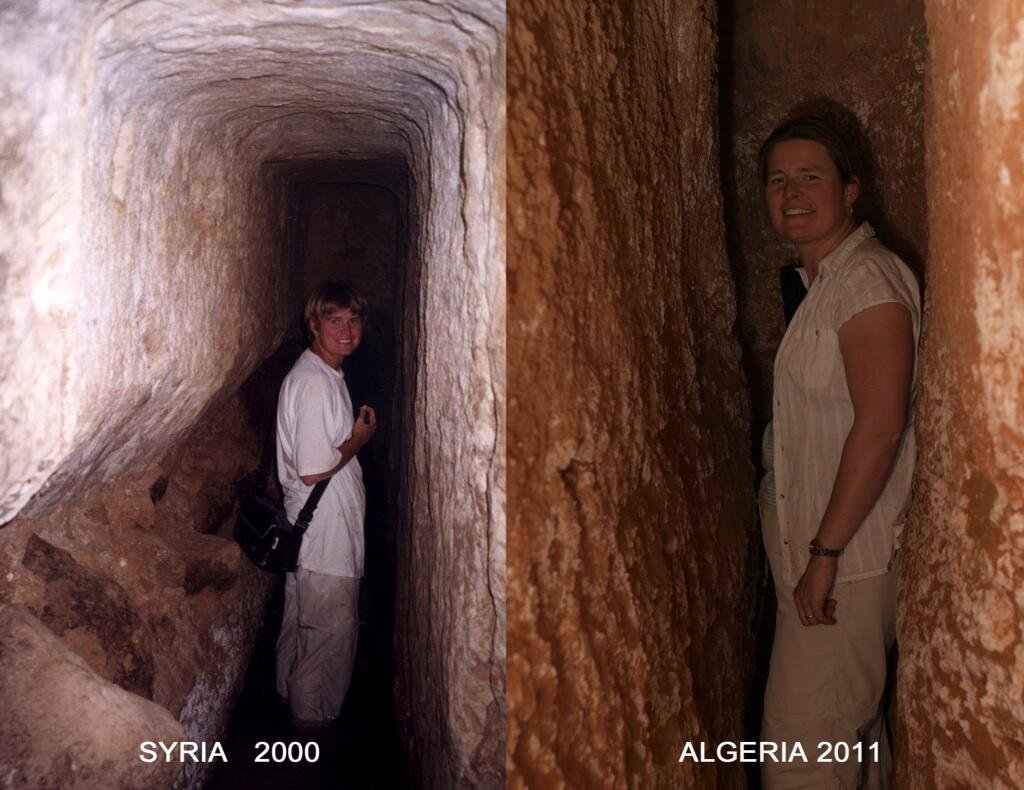Much of the Middle East is suffering brutal droughts due to water table depletion and global heating, with consequences in terms of population livelihoods and liveability. A novel solution might come from the ancient Romans.
When in 1997, Dutch filmmaker Josepha Wessels arrived in Shallalah Saghirah, a small village on the fringe of the Syrian steppe southeast of Aleppo, it was like stepping back hundreds of years. “There were all of these wonderful little, white-painted beehive houses,” she says. “It was very rustic and had no electricity supply.” The most remarkable historical artefact, however, was beneath Wessels’ feet. The village’s water arrived via a series of tunnels that were constructed not hundreds but 1,600 years ago. “To some people it sounds dull but the qanats really excited me,” Wessels says.

Qanats were first laid down during the Byzantine-Roman era (395 to 1453CE). They consist of a series of porous subterranean wells connected by gently sloping tunnels that use the force of gravity to transport water to the earth’s surface. They were traditionally used to provide a reliable supply of water to human settlements and to irrigate fields in hot, arid and semi-arid environments.
“In Greek and Roman times the qanats played a key role in the development of empires and thriving cities such as Palmyra,” Wessels, who went on to author a PhD on the topic, explains. Spreading with the Persian empire from south to Egypt and and as far east as India, qanats – also known as kariz – fell out of use from the 1960s on with the advent of diesel-driven pumps and private wells.
But could they be the answer to the Middle East’s water woes? Today a combination of that 20th century over extraction and climate change has led to a crisis for water tables in the already drought-prone region. Although Wessels warns against a facile link between drought and political instability, a 2020 report by the University of California argues that a severe drought, worsened by a warming climate, drove Syrian farmers to abandon their crops and flock to cities, helping to trigger today’s brutal civil war.
In troubled Syria and in Iran, Jordan and Oman, water shortages are an increasing threat to both livelihoods and liveability.

Wessels’ chance trip led, in the summer of 2000, to a participatory project in which a small group of Shallalah Saghirah villagers cleaned and renovated their village qanat. Wessels, with colleagues including her hydrologist husband Robertus Hoogeveen, went on to lead similar community-led renovations of qanats in towns including in Al Dumayr, a city located 45 kilometers north-east of Damascus, and Qara near to the border with Lebanon with funds from, amongst others, the Netherlands Government. Wesssels soon found that although over pumping by mechanical means was a feature of qanats falling out of use, often they had simply become blocked with calcareous deposits or debris as communities lost to knowledge, or will to maintain them.
“Qanats are simple technology, but every ten years or so they need to be cleaned out, relined so they don’t collapse and desilted,” Wessels says. “Importantly, you cannot do this without the community working together.” Wessels adds that whilst Iran still boasts individuals capable of building qanats – known as muqannis, and often trained by their fathers – Syria now lacks these traditional skills, and thus relies on ancient qanats laid down hundreds, or in some cases thousands, of years ago.

There are obvious attractions in reverting to this ancient water extraction system in our turbulent, heating times. Qanats have the advantage of being resistant to natural disasters such as earthquakes and floods, and to deliberate destruction in war. Furthermore, they are almost insensitive to levels of precipitation, delivering a flow with only gradual variations from wet to dry years. The abandonment of qanats is a warning sign that groundwater in a region is being overexploited, says Majid Labbaf, who has worked on the reconstruction of qanats in Iran, Iraq and Azerbaijan. “The drying up of the qanats is an indication of a disconnection between humans and their natural environment,” he says.
Sadly, the city where Wessels original renovation took place is today abandoned due to Syria’s long civil war, although qanats in Al Dumayr and at Qara are still in operation. Wessels hopes that should inhabitants return to Shallalah Saghirah, they’ll find its ancient qanats will still be able to provide sufficient water for community life. Wessels also welcomes bids to recognise qanats as prime examples of Islamic heritage for example in the case of the UNESCO world heritage listing of Persian qanats in Iran. For successful restoration, state actors also need to be involved, she says, as qanats have to work in tandem with modern piped water systems. This, she adds, is not just a case of returning to the ‘old ways’.
“By rehabilitating the qanat system in combination with efficient groundwater management measures water resources, in Syria and elsewhere, can be saved for future generations,” she said. “But for that you need political will, and you need peace.”
Author: Sally Howard, The India Story Agency for Sacred Groves
Images Credit: Robertus Hoogeveen and Lund University
Did you enjoy this article?
Share with friends to inspire positive action.








